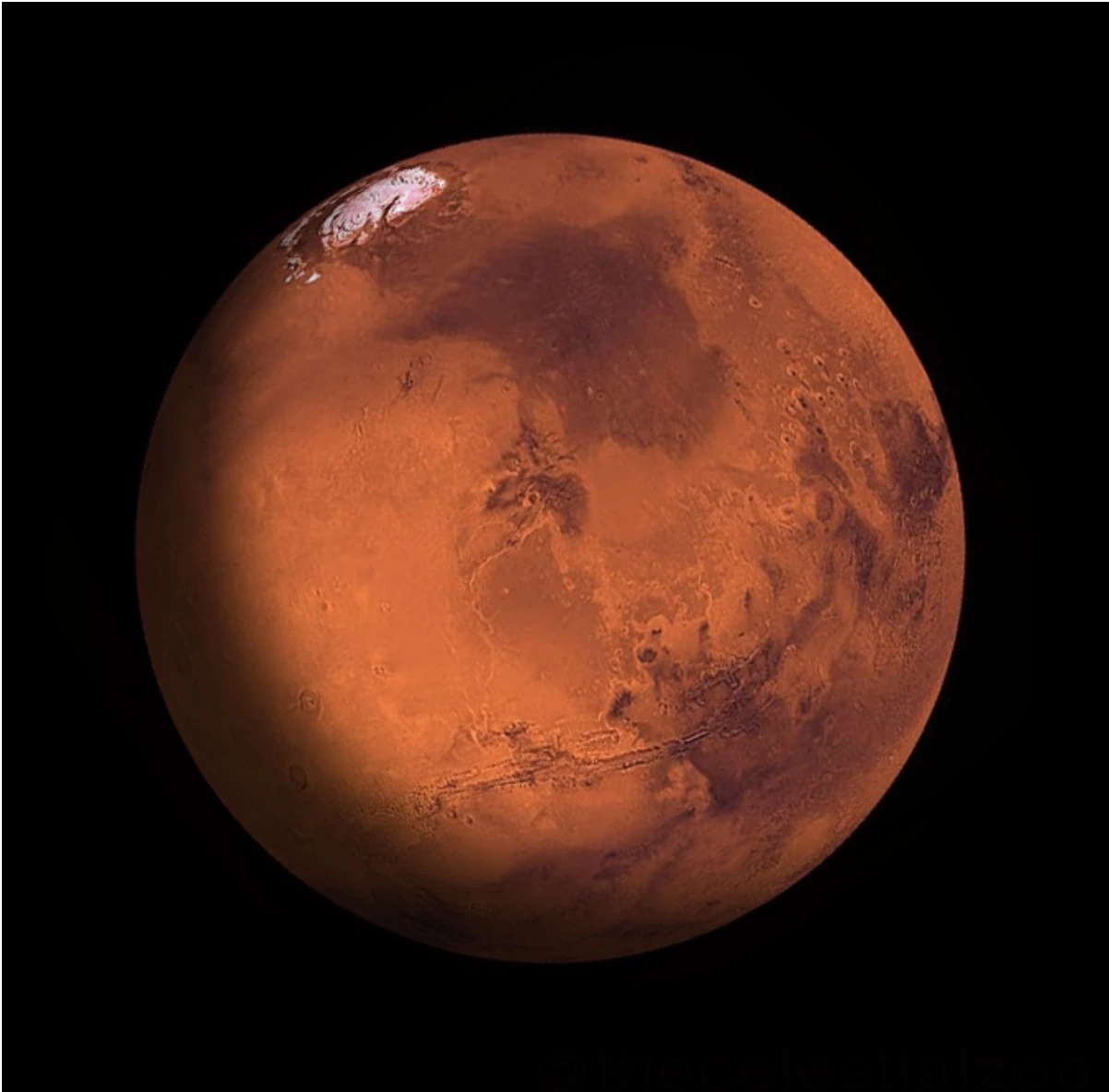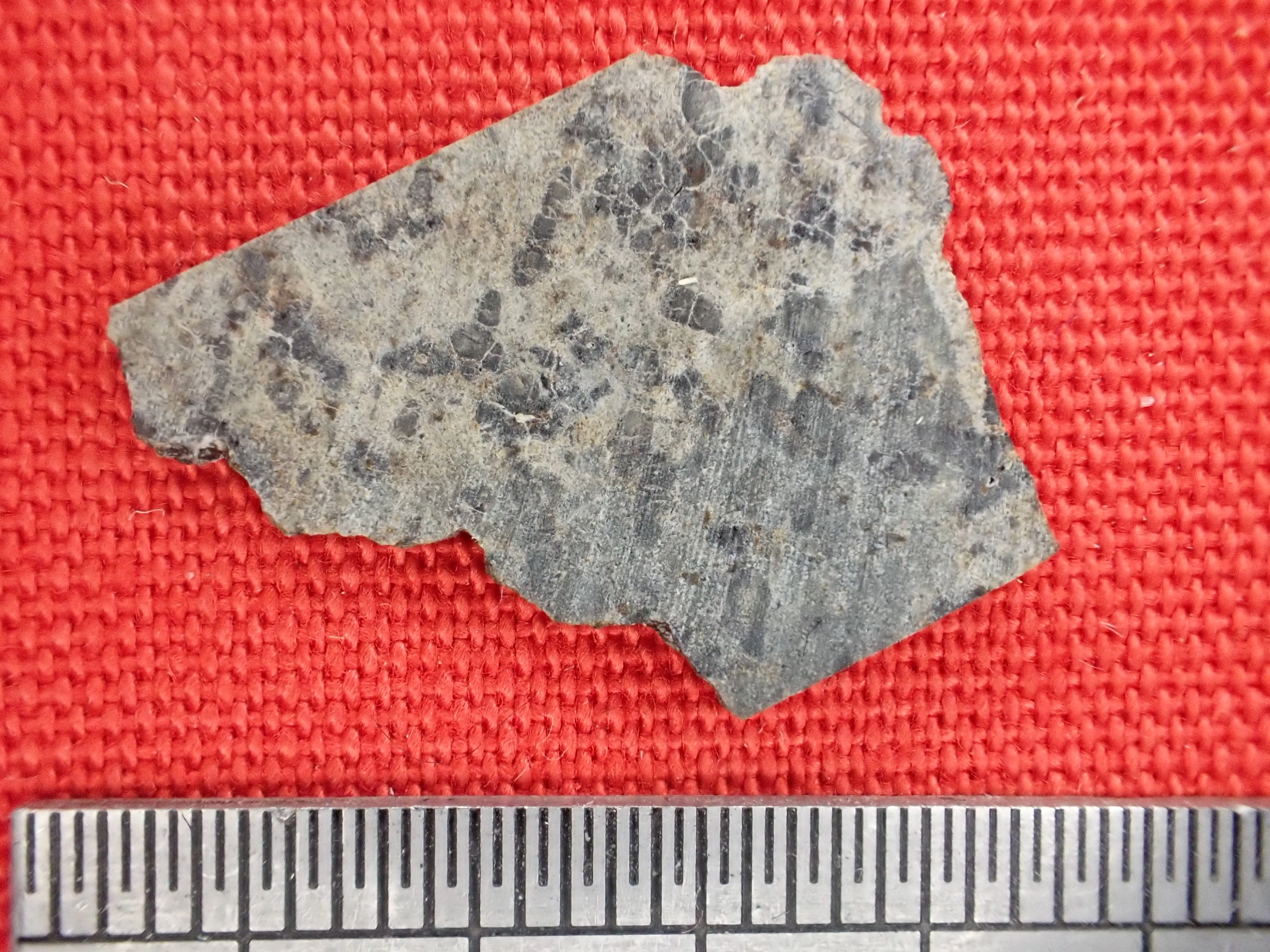Rocks from the Red Planet
, 18 March 2021
This weekend our Curators open online doors to our fascinating meteorite and space rock collections. Join them on Saturday and Sunday for free behind the scenes tours, streamed on our National Museums Wales website, as part of our Amazing Astronomy Weekend. Then on Sunday, our museum curators will be joined by expert astronomers to take your questions in a live, bookable event. See
Amazing Astronomyfor full details.
Here, Andrew Haycock, Curator Mineralogy & Petrology, Natural Sciences shares a little of his thoughts on one of our space treasures, a rock from Mars.
There are 77 meteorites in the Amgueddfa Cymru - National Museum of Wales collection, which have been found in localities the World over. Some of these are permanently on display in our Evolution of Wales Gallery. They include a 260kg iron meteorite, which fell in Namibia, Africa; and a slice of a stony meteorite which fell in Beddgelert in 1949. This meteorite is one of only two known meteorites from Wales.
The vast majority of meteorites in the collection are held in climate-controlled storage, so they do not decay, but are often used for our Space-themed outreach events and teaching. Every specimen, however small or big, visually stunning or insignificant looking, has an interesting story to tell. One such unremarkable looking specimen is a stony shergottite meteorite collected in Libya in 1998.
The Mars meteorite is a shergottie (NMW 2010.17G.R.26). The surface of Mars may be red but the rocks that we have are grey, it is only the surface dust of the planet that gives the distinct orange colour.
Of the 65,000 or so meteorites, which have been collected, examined and named, just 292 are considered to originate from Mars. They can be classified as 3 different rock types, all igneous in origin (formed from magma or lava). They are much younger than the meteorites from the Asteroid belt, and were formed by volcanic activity on Mars between 165 and 1,340 million years ago. Only one known meteorite, found in the Allen Hills of Antarctica, is thought to be around 4,500 million years old, and was part of the initial Martian crust when the planet formed.
Mars has been in the news a lot recently (February 2021), with the landing of the NASA Perseverance rover. The rover’s main job is to seek signs of ancient life and collect samples of rock and regolith (broken rock and soil) for possible return to Earth.
Launch of Mars Perserverance rover, 30 July 2020
So, how do scientists know that these meteorites are from Mars? By studying the composition of meteorites similar to this one, and comparing it to data sent back by spacecraft on Mars. The meteorites were found to have elemental and isotopic compositions very similar to some Martian rocks. The Shergottite group of Martian meteorites are very similar to basalt rocks found on Earth, but the oxygen isotopes are different to those of Earth rocks.
Conclusive evidence for a Martian origin was provided in 1983, when tiny bubbles of gas trapped in inside the glassy fragments of a shergottite meteorite from Antarctica were analysed. The trapped gasses matched perfectly with the signature of the Martian atmosphere as reported by NASA’s Viking 1 and 2 landers in 1976.
No astronauts have been to Mars, and no material from Mars has been sent back to Earth. So how did a rock from Mars get to Earth? The only known mechanism to eject a rock from Mars is a massive meteorite impact event. The impact would have smashed into Mars with enough force to eject debris out into Space, away from the gravitational pull of the planet, which is much less than that of Earth. At some point the meteorites were deflected from their orbit and pulled into the Earth’s gravitational field. Some of this debris then fell to Earth as meteorites.
The 3-million-year-old crater Mojave, is 58.5 km in diameter and the youngest crater of its size on the planet, has been identified as a potential source of most Mars meteorites.
Unlike the Moon, when it comes to Mars, scientists don't have rocks collected by astronauts to study. But they do have the next best thing, and they are Martian meteorites.


